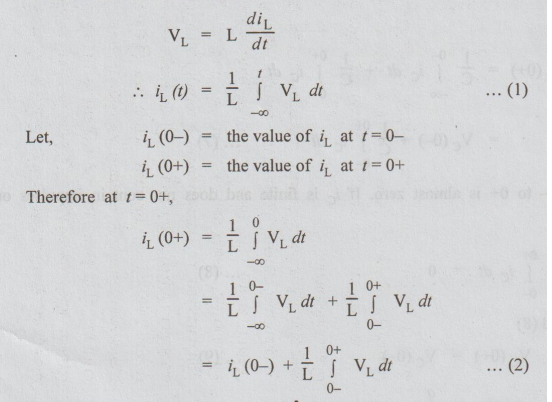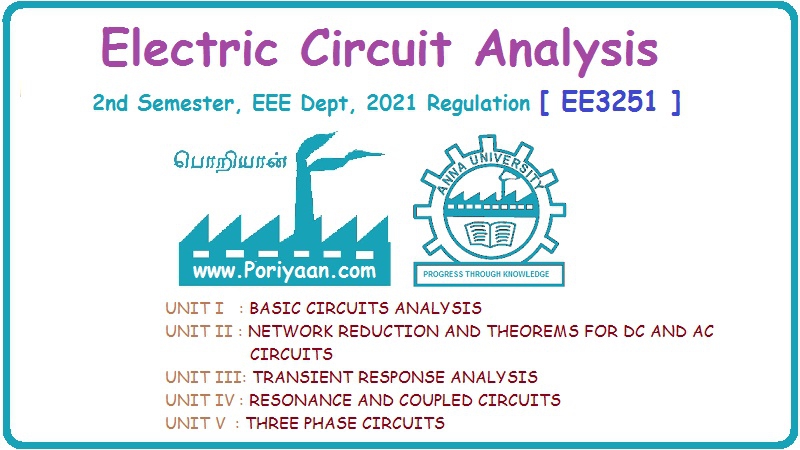Electric Circuit Analysis: Unit III: Transient Response Analysis
Initial (boundary) conditions for inductance
Transient Response Analysis
That is, the current through the inductor just after the switch is closed must be same as the just before closing the switch.
INITIAL (BOUNDARY) CONDITIONS FOR INDUCTANCE
For an inductor, we know that,

iL
(0-) is the initial state of the inductor. It gives the past history. (before t
= 0) of the inductor. The interval from 0- and 0+ is almost zero. If VL
is finite and does not contain impulses,

So,
from equation (2) and (3),
iL
(0+) = iL (0-) ... (4)
That
is, the current through the inductor just after the switch is closed must be
same as the just before closing the switch.
If
an inductor has no initial current, then iL (0-) = 0. From equation
(4), iL (0+) = 0. Hence an inductor with no initial current behaves
like an open circuit at t = 0+.
An inductor with initial current iL (0-) = IL0 is considered as a current source IL0 at t = 0+ as shown in fig. 4.1. Remember that VL (0−) ≠ VL (0+).
Electric Circuit Analysis: Unit III: Transient Response Analysis : Tag: : Transient Response Analysis - Initial (boundary) conditions for inductance
Related Topics
Related Subjects
Electric Circuit Analysis
EE3251 2nd Semester 2021 Regulation | 2nd Semester EEE Dept 2021 Regulation
